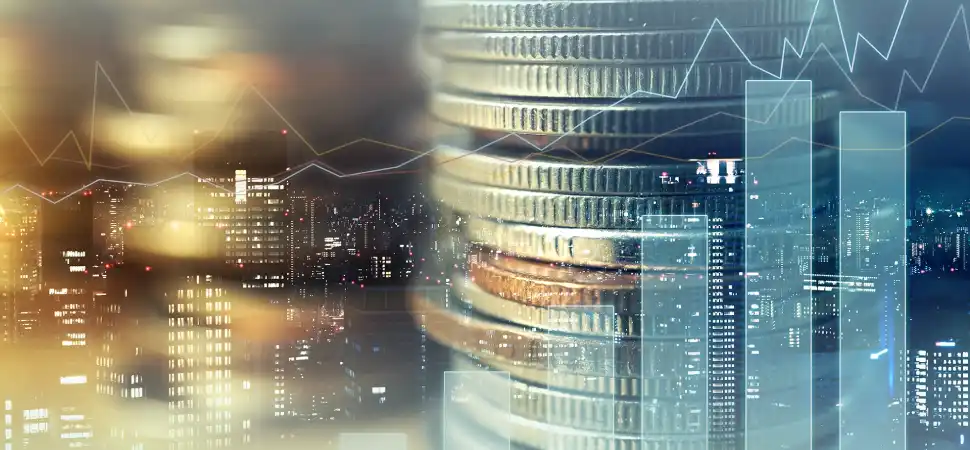15.08.2024
Евгений Лебедев
187

Phases of the economic cycle have a direct impact on market performance and conditions, regardless of the assets involved. Whether the economy is expanding or contracting, traders need to understand the various issues and implications of these phenomena. A number of indicators can be monitored to anticipate these major changes in the economy and invest according to the different phases of the market. This will give you a better chance of avoiding potential losses and taking advantage of opportunities as they arise.
What is an economic cycle?
The economy is constantly going through alternating phases of decline and growth, known as economic cycles. To better understand these cycles, various models are used to account for the different durations of these periods. It is important to remember that recession and growth phases alternate naturally.
To track and analyse these phases, certain indicators and factors are used to measure economic growth. One of the key indicators is Gross Domestic Product (GDP), which reflects the total value of goods and services produced and thus the health of the economy.
Governments regularly publish data on GDP and other economic indicators. Economists and financial analysts use these data to compare the current situation with past periods and to forecast future trends. They usually rely on statistics from the previous year or the last quarter to assess the dynamics of prices and other economic parameters.
What are the phases of the business cycle?
Four key periods can be distinguished in the business cycle:
- Expansion: In this phase, companies and industries begin to show revenue growth. Household budgets increase due to rise in average income and unemployment rate decreases leading to higher employment. As a consequence, demand and consumption increases, which encourages companies to invest more. Trade becomes stable and all this contributes to a gradual increase in GDP and inflation;
- Peak: At some point, the expansion phase reaches its peak, after which economic activity begins to slow down. While employment, investment and spending are still at high levels, their growth rates slow down. As a result, GDP may fall slightly, although it is still in positive territory, and inflation may continue to rise;
- Recession: During a recession, inflation weakens and spending, investment and employment fall. GDP begins to decline markedly, reflecting the downside of the growth phase. An economic downturn becomes evident;
- Trough: After the bottom is reached, GDP gradually begins to recover. This period is characterised by a decline in consumer and investment confidence. However, over time, low prices stimulate increased spending by both businesses and individuals. This creates a vicious cycle that triggers a new phase of economic growth. Typically, two quarters of declining GDP indicate the beginning of a recession, and two quarters of growth signal the start of an expansion phase.
Since economic activity tends to feed on itself, this phenomenon creates a vicious circle when the economy is in crisis or, conversely, a virtuous circle in times of growth. It is very important to know how these cycles unfold when you open your trades, because the impact and consequences of these phases affect even the best performing assets.
Why does the economy move in cycles?
Economic activity tends to be self-sustaining, whether in crisis or growth. When the economy grows, consumption and wages increase. Companies are more productive, which leads to increased demand. Thus, a vicious cycle is created that fuels economic growth.
Conversely, if there is a crisis (currency crisis, bursting bubble, falling productivity growth, etc.), unemployment rises and hiring and consumption decline. The result is a vicious circle that blocks economic development. This alternation of ups and downs can be observed during periods of varying duration called business cycles.

Types of economic cycles
One of the most famous economic cycles is the Kondratiev Cycle. It was discovered by Soviet economist Nikolai Kondratiev in 1920 and later expanded by Joseph Schumpeter in the late 1930s. Schumpeter suggested that innovations emerge in ‘clusters’, fuelling economic growth for 20-30 years. However, when innovation peaks, growth slows and the economy requires new breakthroughs to resume robust growth.
The Smith cycle is based on how demographic changes affect economic activity, creating ripple effects. Essentially, changes in population, birth rates and migration patterns gradually shape supply and demand, which in turn fuels economic growth or slows it down. The Smith cycle has a duration of 15 to 25 years.
The Juglar cycle, proposed in 1862 by Clément Juglar, focuses on the dynamics of corporate investment. This cycle starts with a phase of intensive and sustained investment, when companies invest heavily in new projects and expand their operations. However, over time, when all the most profitable investments have been made, there is a period of decline associated with a decrease in investment activity. The duration of the Juglar cycle is 8 to 10 years.
The Kitchin cycle was discovered in the 1920s and reflects the fluctuations associated with inventory management in companies. This cycle, which lasts about 3-4 years, includes an active growth phase that lasts about 2 years, followed by a deceleration phase that also lasts about 2 years. The Kitchin cycle demonstrates how decisions made by companies regarding the management of their inventories can affect overall economic activity, creating short-term fluctuations that are felt at all levels of the economy.
Conclusion
Short-term fluctuations in the markets are usually based on the underlying conditions of the economy. The economic cycle follows dynamics that have been observed and confirmed through historical data. This makes it a crucial concept in investing and trading. Whether your strategy is long-term or short-term, there are indicators, technical tools and economic factors that can help you identify these phases. In this way, traders can anticipate trends and make more informed trading decisions. Therefore, it is important to follow the course of these cycles when opening positions, as even the best performing assets are affected by their impact and consequences.
